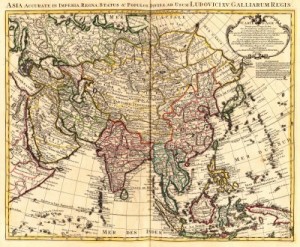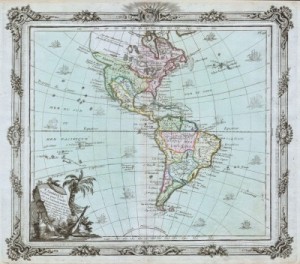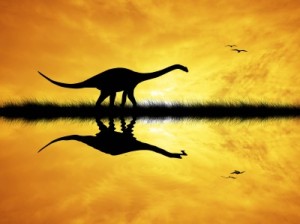On March 3, 2013, researchers found evidence of a landmass estimated to have existed between 2,000 and 85 million years ago. The fragments of an ancient continent are buried beneath the floor of the Indian Ocean.
May 8, 2013, researchers announced that they found traces of a long-lost island/continent located at a high-rising mass of ocean floor about 930 miles offshore of Rio de Janeiro, Brazil.
Surfacing Our Past
The continents that we live upon today are the archeological remnants of ancient continents, and are merely terrestrial artifacts formed from the fragments of the breakup of older supercontinents, long extinct.
Over the past 500 million years, there have been five different sets of continents, called supercontinents. Sometime in the future, there will be a sixth supercontinent very different from what we know today. All prehistoric continents began as one massive landmass, or “supercontinent.”
Supercontinent #1 – Vaalbara
The earliest known supercontinent was Vaalbara. Vaalbara is believed to have formed about 3,600 million years ago (3.1 billion years ago [3.1 GA]). The basic structure of Vaalbara consisted of eastern South African rocks that match the same rocks found today in the northwest section of Western Australia.
Supercontinent #2 – Kenorland
After Vaalbara, the supercontinent Kenorland was formed around 2.7 billion years ago. Kenorland formed what we know as today’s North America, Greenland, Scandinavia, Western Australia, and the Baltic regions.
Supercontinent #3 – Columbia
After Kenorland, the supercontinent Columbia formed around 2.0–1.8 billion years ago and broke apart about 1.5–1.3 billion years ago[i]. Columbia was small, about 12,900 kilometers (8,000 miles) from North to South, and about 4,800 km (3,000 miles) across its broadest stretch. Fossil records show that the east coast of India was attached to Western North America during this time, and Southern Australia was pushed up against Western Canada. Most of South America was positioned where the western edge of modern-day Brazil lined up with Eastern North America, extending to the southern edge of Scandinavia. The Amazon region in South America first appeared on Columbia[ii].
Supercontinent #4 – Rodinia
Supercontinent #5 – Pangaea
Some 200 million years later, the broken pieces of Rodinia reconnected as Pangaea, and this was after the extinction that killed the dinosaurs.
Most of Rodinia was concentrated in the Southern Hemisphere, but the North and South poles had shifted at this time, pointing into the Sun. Pangaea was wrapped around the equator like a planetary belt. North America formed the core of Pangaea, called Laurentia, which was at the South Pole[iii].
The southeastern United States was wedged between Africa and South America. Australia, India, and Antarctica formed the largest landmass, called Gondwana, north of Laurentia.
Siberia, Russia was located just south of the equator between Gondwana and Laurentia, and Scandinavia, Europe, European Russia, and much of what is today’s Asia were in fragments along the north coast of Gondwana.
Supercontinent #6 – ????
[i] Zhao, Guochun; Cawood, Peter A.; Wilde, Simon A.; Sun, M. (2002). “Review of global 2.1–1.8 Ga orogens: implications for a pre-Rodinia supercontinent”. Earth-Science Reviews 59: 125–162.
[ii] Bispo-Santos, Franklin; Manoel S. D’Agrella-Filho; Igor I.G. Pacca; Liliane Janikian; Ricardo I.F. Trindade; Sten-Ake Elming; Jesué A. Silva; Márcia A.S. Barros; Francisco E.C. Pinho (June 2008). Columbia revisited: Paleomagnetic results from the 1790 Ma colider volcanics (SW Amazonian Craton, Brazil) Precambrian Research, v. 164, p. 40-49-162.
[iii] University of Washington. Burke Museum of Natural History and Culture. 2012.




